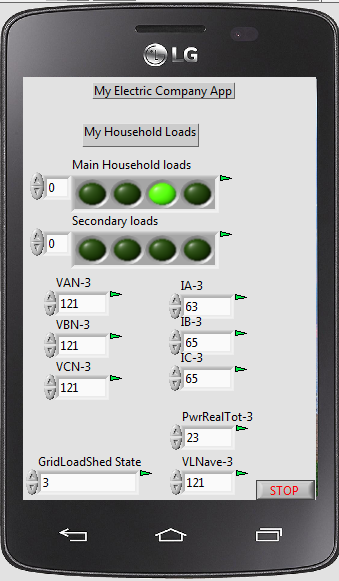Smart Grid Lab Examples
Here are examples of the excellent projects our lab produces! One of many include our Custom Smart Generator control circuit for scale model power grid!(shown below).
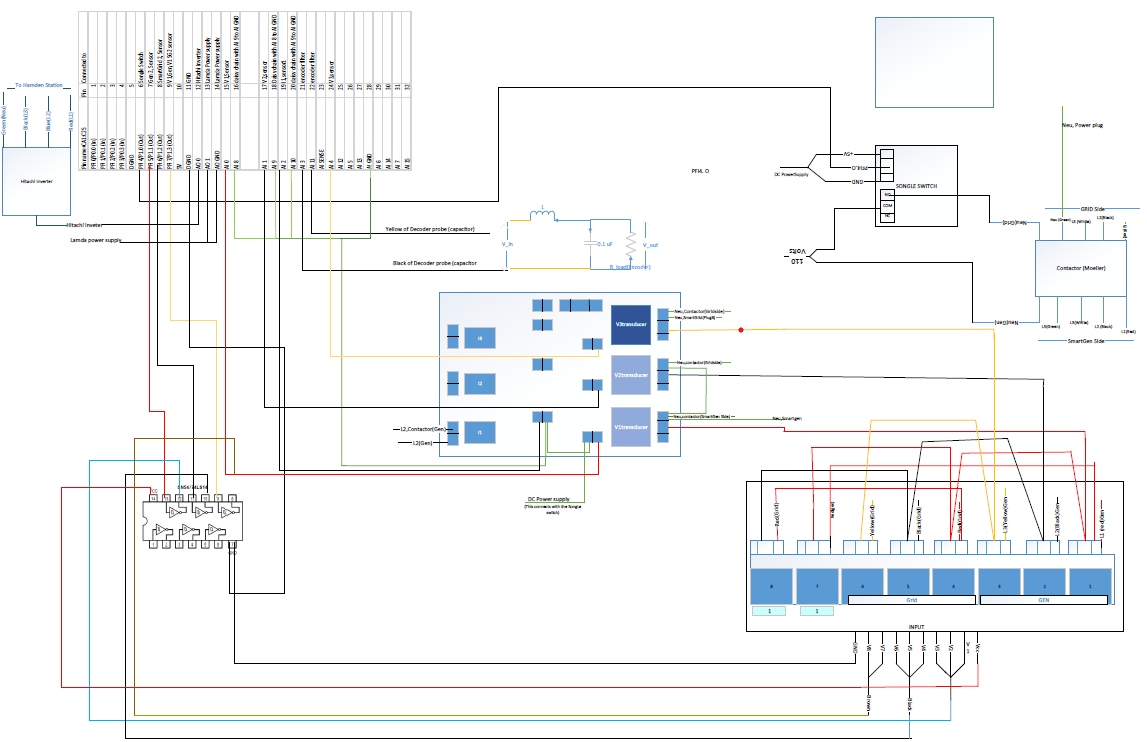
See many more examples below!
- Cascading Failure Prevention
A power grid such as the one shown in Figure 6 was created in the laboratory. A Transmission line failure was emulated by closing a switch feeding one of the transmission lines. Figure 7 shows the resulting currents in the transmission line after the failure, a subsequent transmission line failure, and successful power redistribution due to intelligent agents which changed phase angles of generators relative to each other until no transmission lines were overloaded.
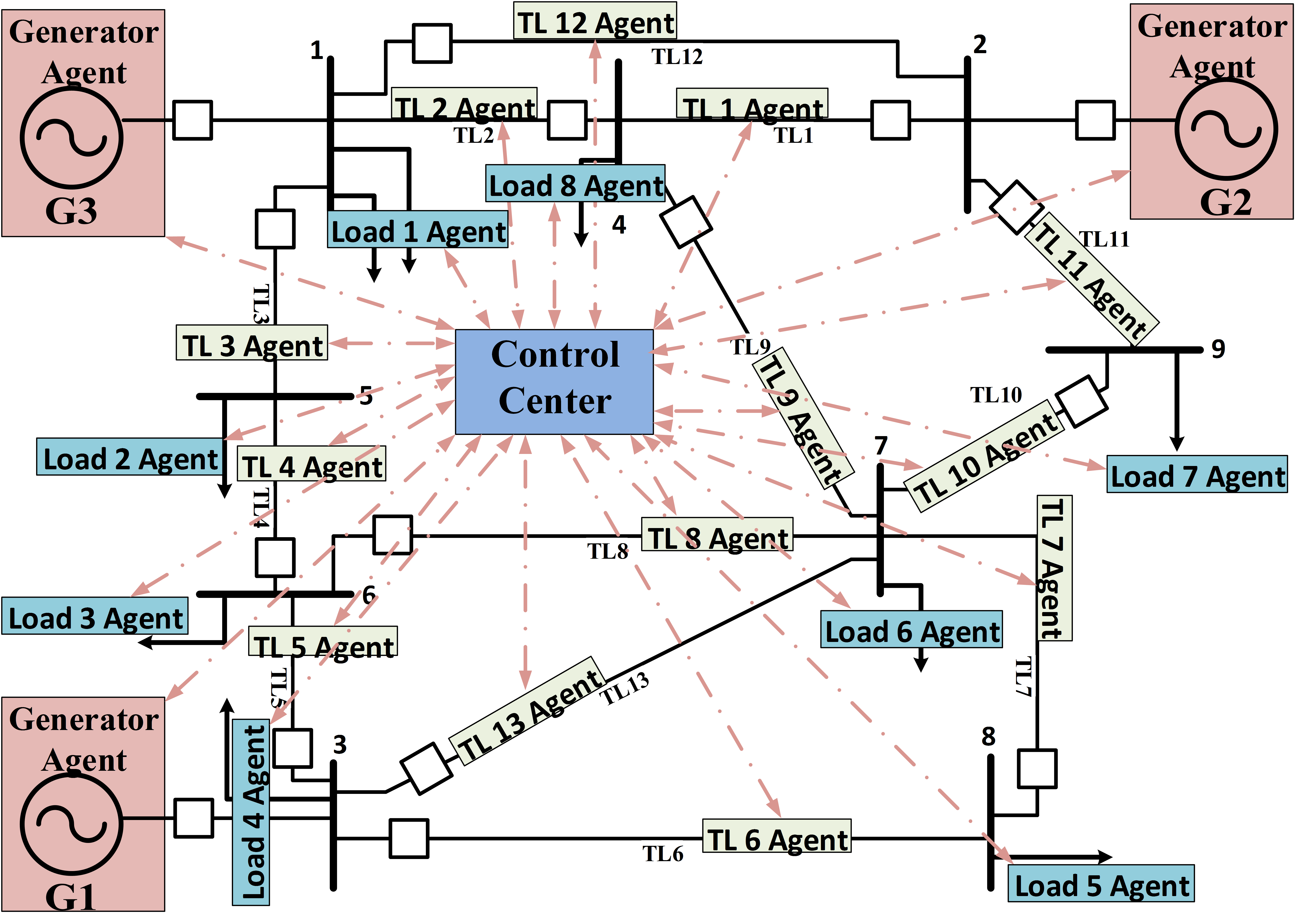
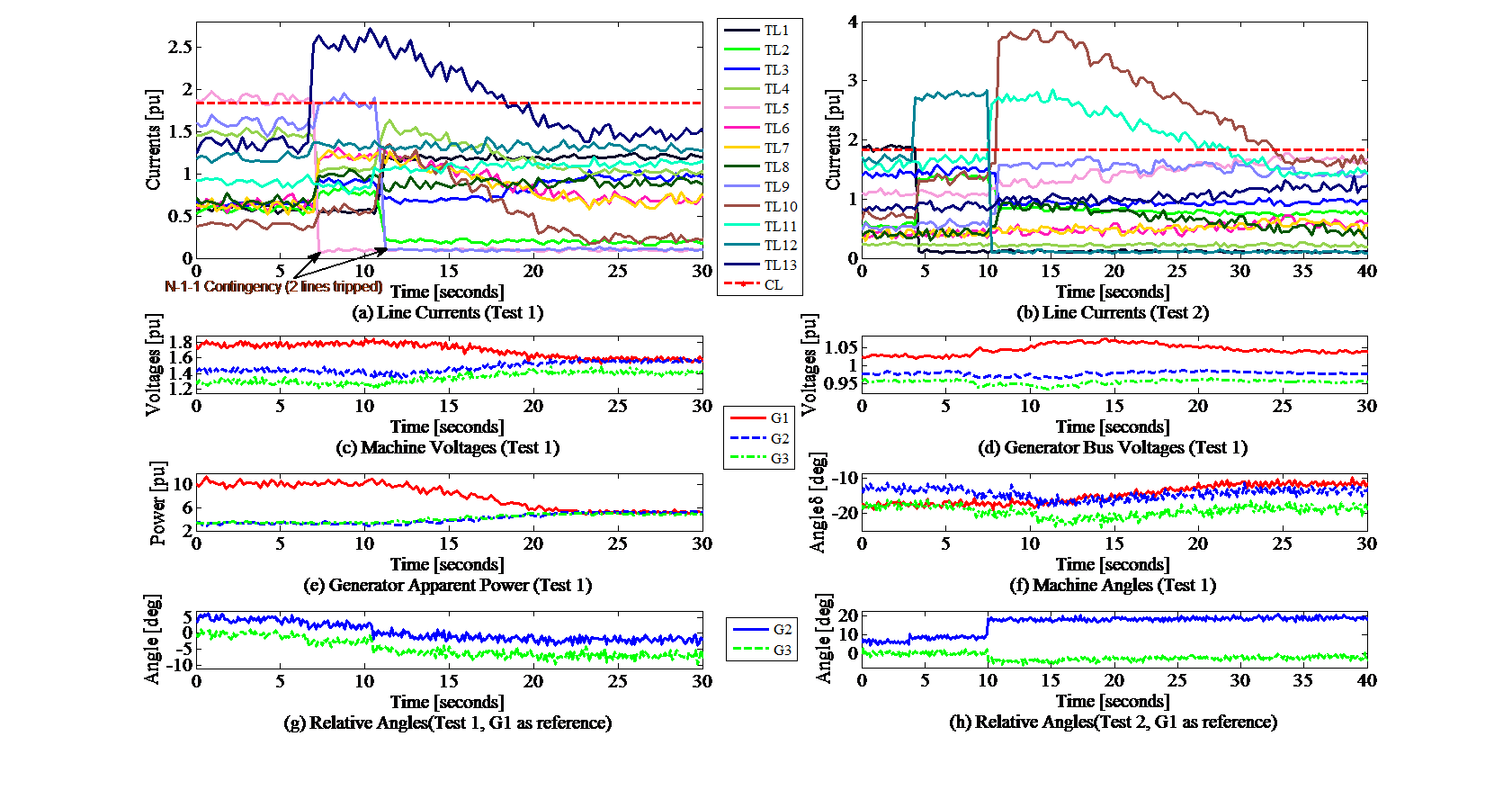
- Preventative Maintenance Facilitated by UAS Inspection
An active area of research in the smart grid laboratory is autonomous inspection of power grid assets for preventative maintenance purposes. The image on the left showing the warmth of a substation transformer under normal operating conditions with no abnormal hot spots.
- Autonomous navigation
- Self-Charging (From the power line or special docking stations along the line)
- Inspection (optical techniques, rf techniques, machine vision techniques)
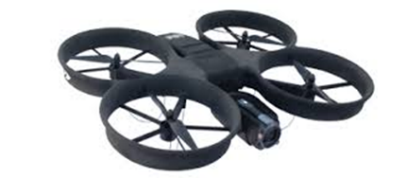
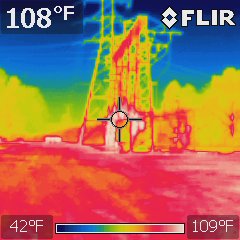
- Wind Emulator
A student tested a strategy for reactive power compensation utilizing wind speed as the trigger for engaging banks of capacitors. In the example the initial wind is zero and once a threshold wind is met the turbine engages. It also has a very high speed wind disengage self-protection mechanism which is evident near the end of the test run where it disengages at very high speed wind and then reengages once the wind drops below the threshold. This capacitor engagement strategy works well in the middle of the test but does nothing for the dynamic engage, disengage portions of operation. Of course an algorithm based on reactive power needs, not wind speed is clearly required.
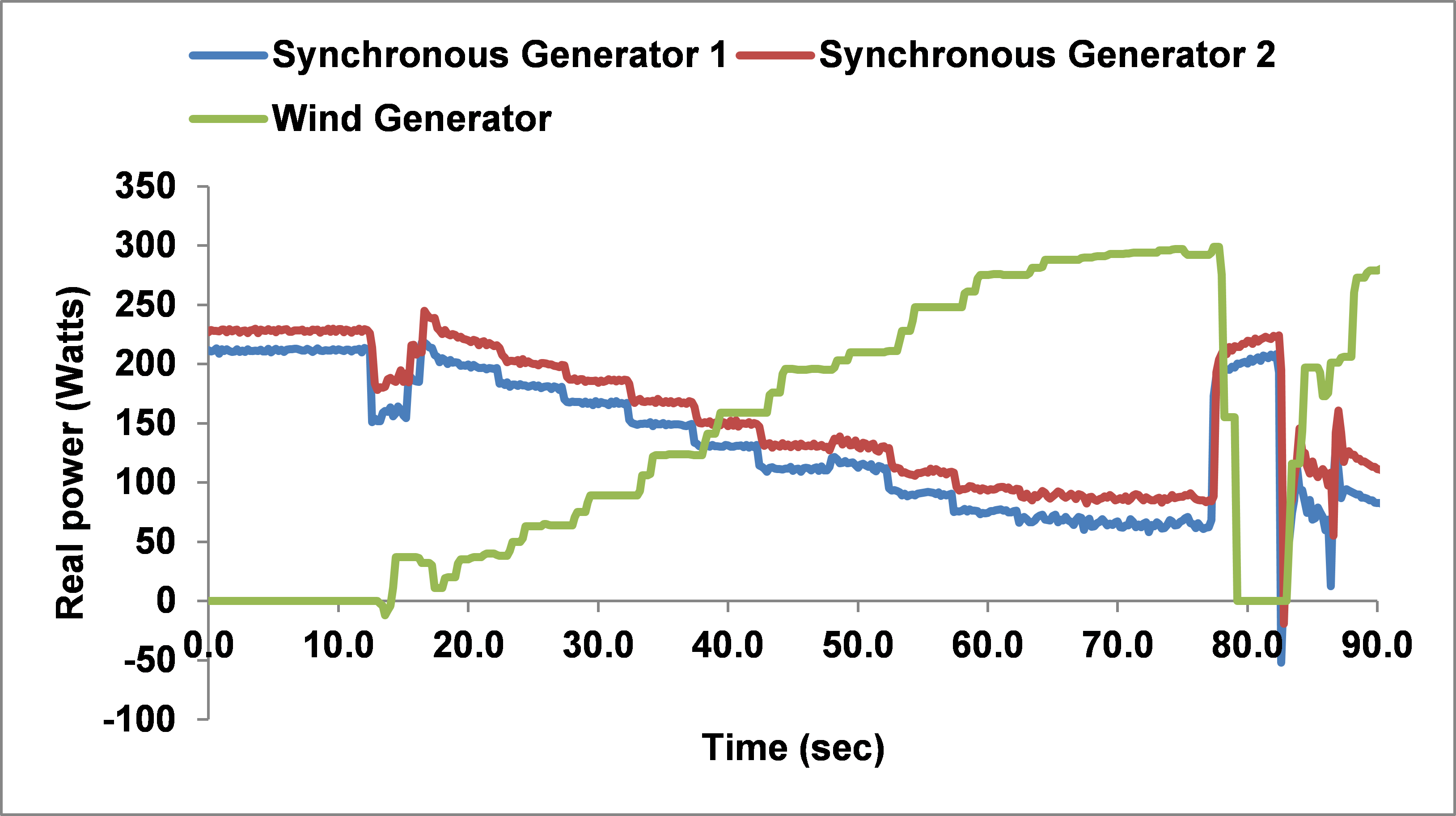
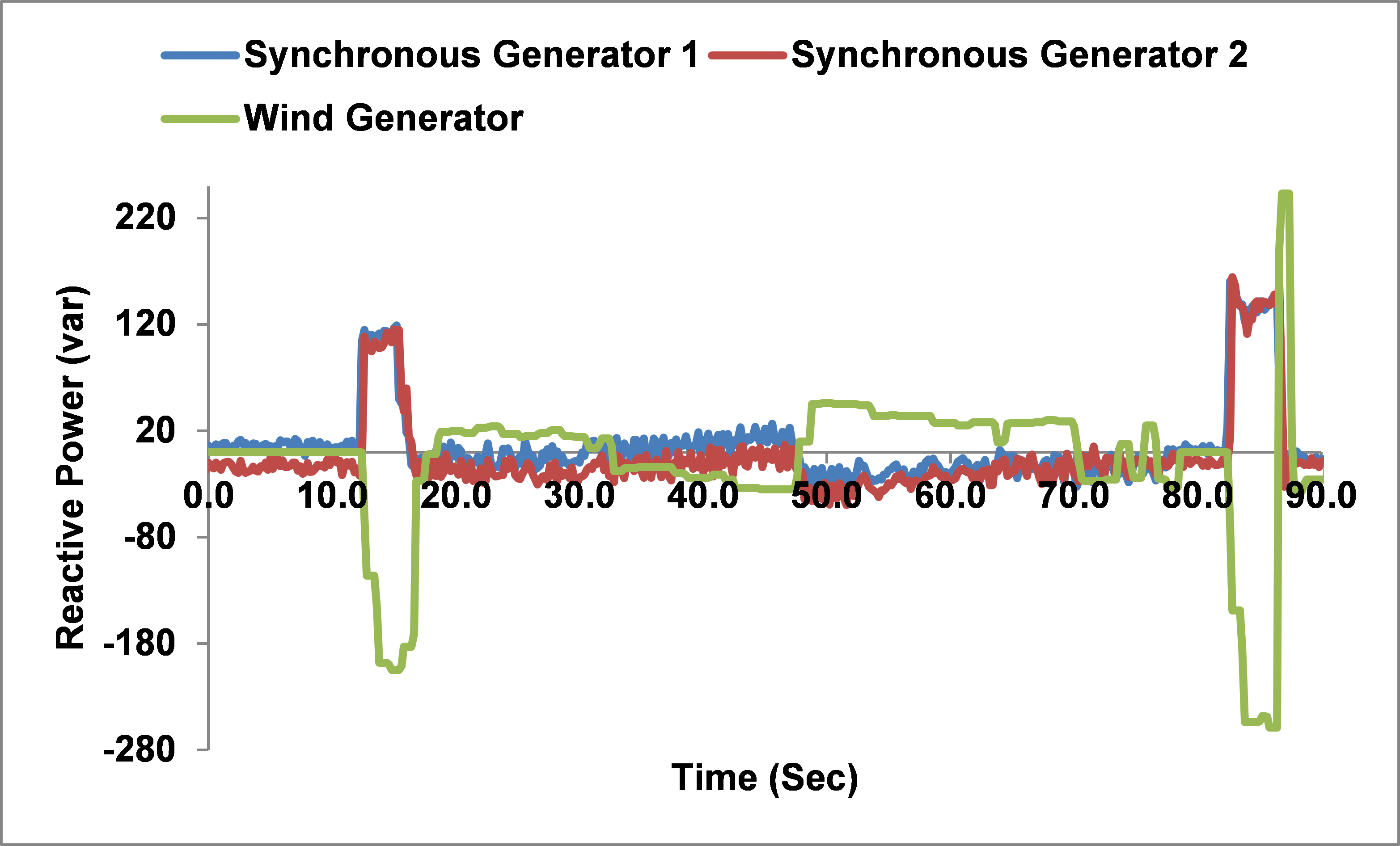
- Load Shedding
A student using two generators and the wind turbine emulator created a scenario where the load profile was too much for the total generation available and implemented a prioritized list of loads that could be shed. It is interesting to note that the fluctuations all were in the traditional generators and that the wind power was utilized throughout the study.
Note also that the dynamics caused by the load shedding are often greater than the step changes in load giving incentive to find less aggressive solutions to power shortfalls. Perhaps the rolling brown outs in California are implemented with less severe transients.
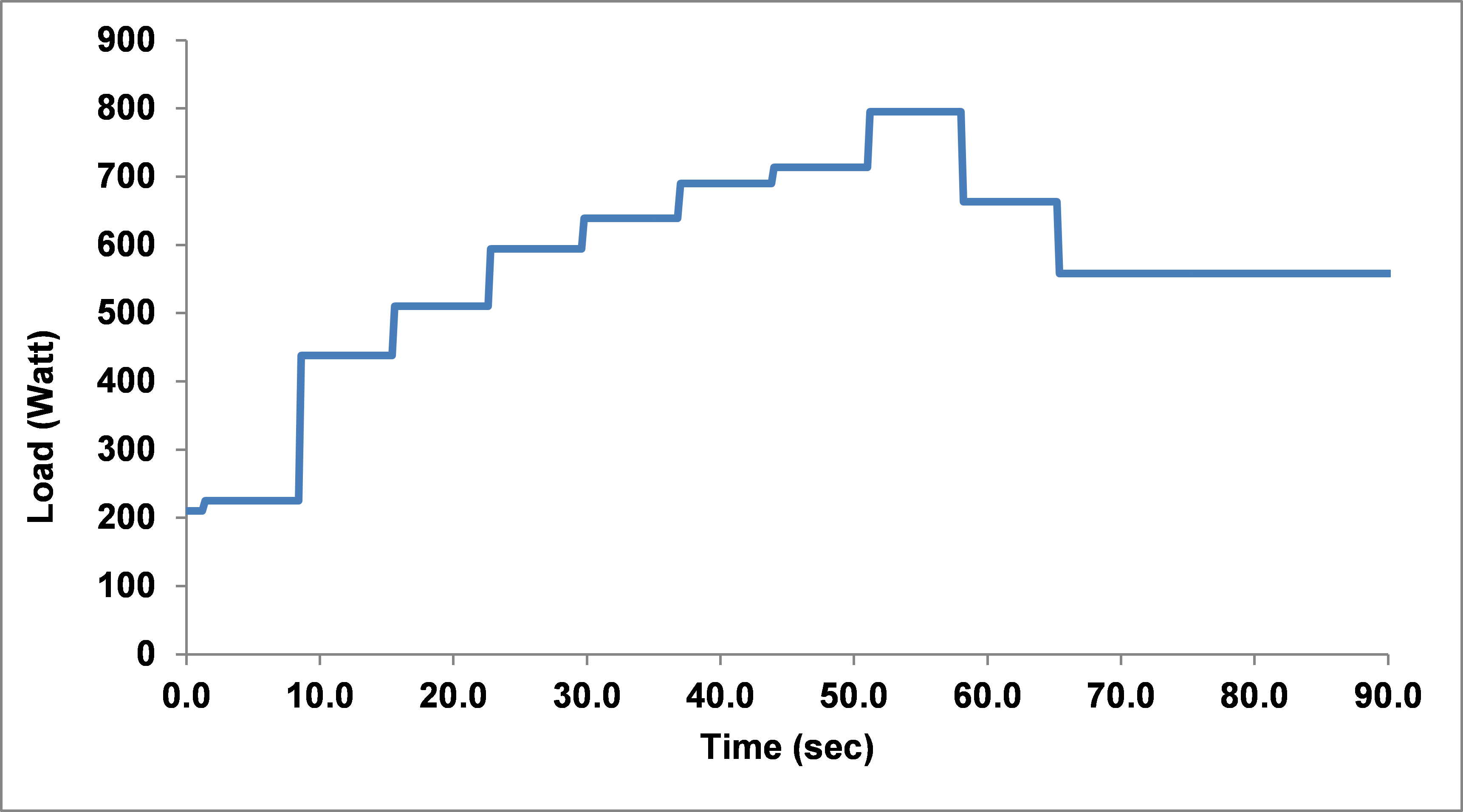
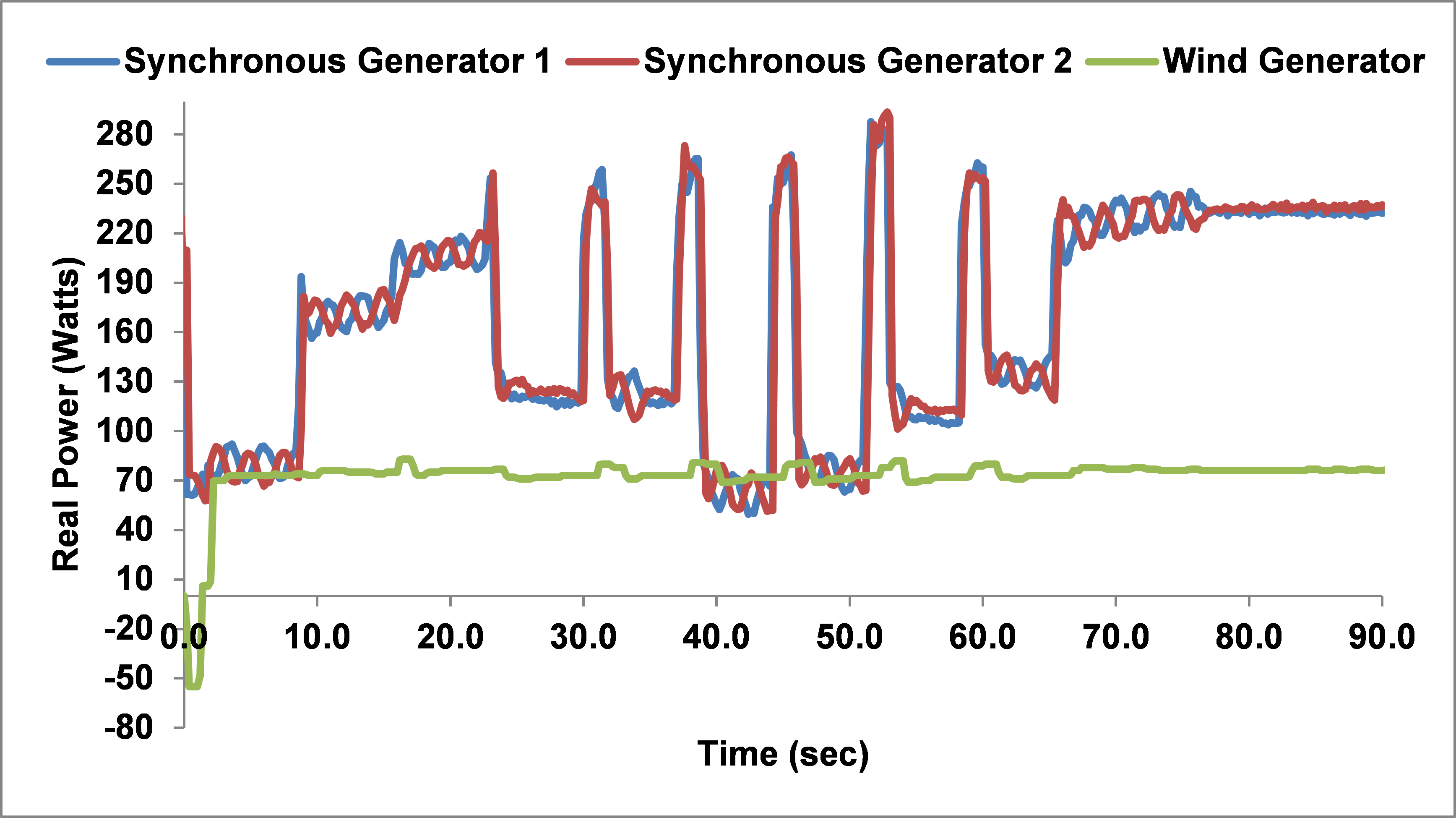
- Testing inverter design for solar emulator to a step change in load
A student developed inverter was tested using the solar panel emulator as a power source. The AC side of the microgrid was subjected to a step change in load so that the stability of the inverter could be assessed. The GUI shows a brief spike in voltage and a step change in current as a load is turned off.
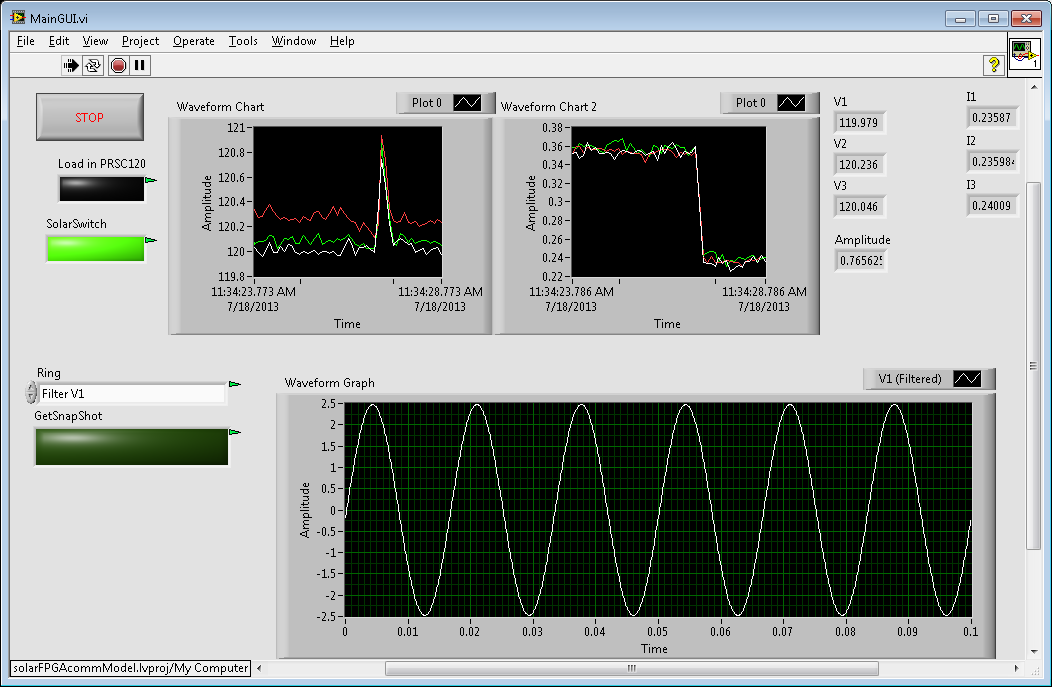
- Voluntary Customer Load Shedding through Smart Phone App
Visiting student scholars from Annamalai University in India wanted to do a small demonstration project using our laboratory. A phone app was mocked up (didn’t have time to actually write the app) whereby if a utility/customer agreement was in place, voluntary load shedding could be implemented by the utility indicating a high demand time and the consumer responding by turning off some of their loads. The smart meter can be used by the app to let the consumer know how much power they turned off and potential rewards for actively participating.
